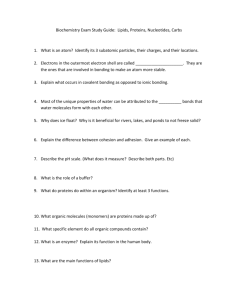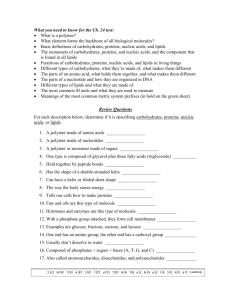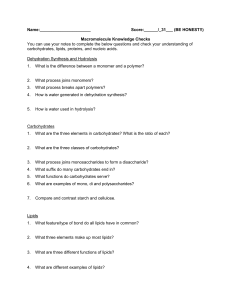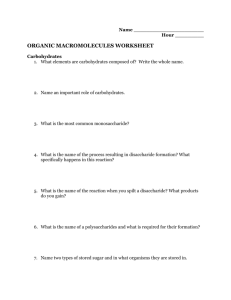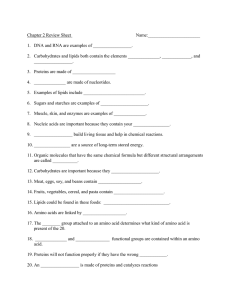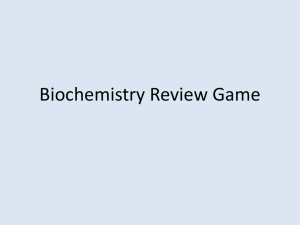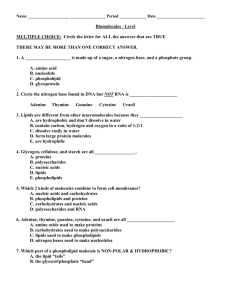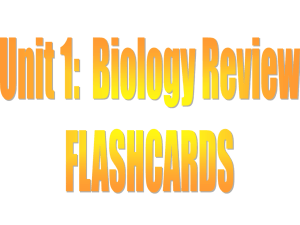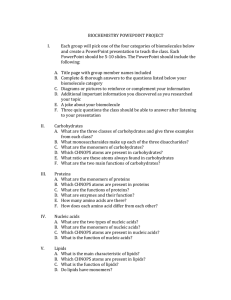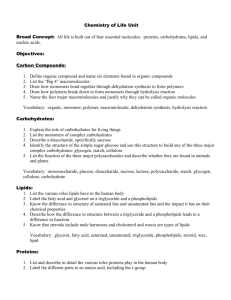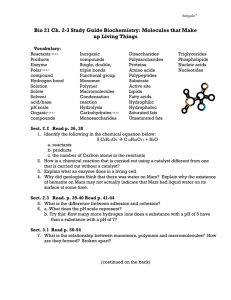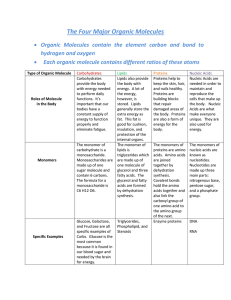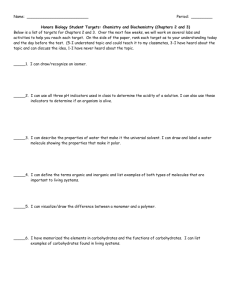chapter 3—biochemistry
advertisement
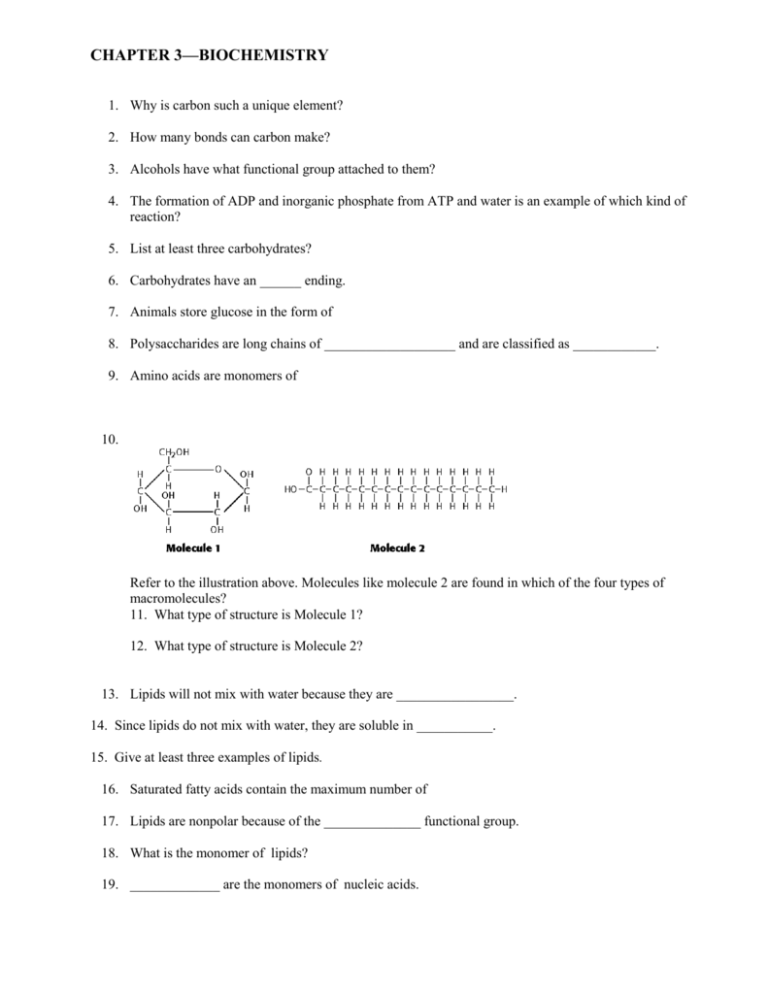
CHAPTER 3—BIOCHEMISTRY 1. Why is carbon such a unique element? 2. How many bonds can carbon make? 3. Alcohols have what functional group attached to them? 4. The formation of ADP and inorganic phosphate from ATP and water is an example of which kind of reaction? 5. List at least three carbohydrates? 6. Carbohydrates have an ______ ending. 7. Animals store glucose in the form of 8. Polysaccharides are long chains of ___________________ and are classified as ____________. 9. Amino acids are monomers of 10. Refer to the illustration above. Molecules like molecule 2 are found in which of the four types of macromolecules? 11. What type of structure is Molecule 1? 12. What type of structure is Molecule 2? 13. Lipids will not mix with water because they are _________________. 14. Since lipids do not mix with water, they are soluble in ___________. 15. Give at least three examples of lipids. 16. Saturated fatty acids contain the maximum number of 17. Lipids are nonpolar because of the ______________ functional group. 18. What is the monomer of lipids? 19. _____________ are the monomers of nucleic acids. 20. Nucleic acids include what two molecules? 21. To break a bond between monomers, you must add water. This is called a _____________ reaction. 22. A model of enzyme action is the 23. Name four functional groups. 24. What are the components of a phospholipid? 25. Without enzymes, the chemical reactions in the body would occur too ________ to support life. 26. Name the different structures that carbon atoms can form. 27. In a condensation reaction, two molecules become linked together and a molecule of ____________________ is produced. 28. A substrate attaches to the ____________________ of an enzyme. 29. In a triple bond, ____________________ pair(s) of electrons is (are) shared between two atoms. 30. What functions do proteins play in living things? 31. How many amino acids are needed to make up all of the proteins in a human? 32. How are proteins related to the coded hereditary message in DNA? 33. What is the difference between organic and inorganic molcules? 34. What 3 elements are found in carbohydrates? In what ratio? 35. What 3 elements are found in lipids? 36. What is the difference between saturated and unsaturated fats? 37. What functional group is associated with amino acids? 38. What elements are found in nucleic acid? 39. What elements are found in proteins? 40. Name some carbohydrates that are used as storage. 41. Name two structural carbohydrates.



